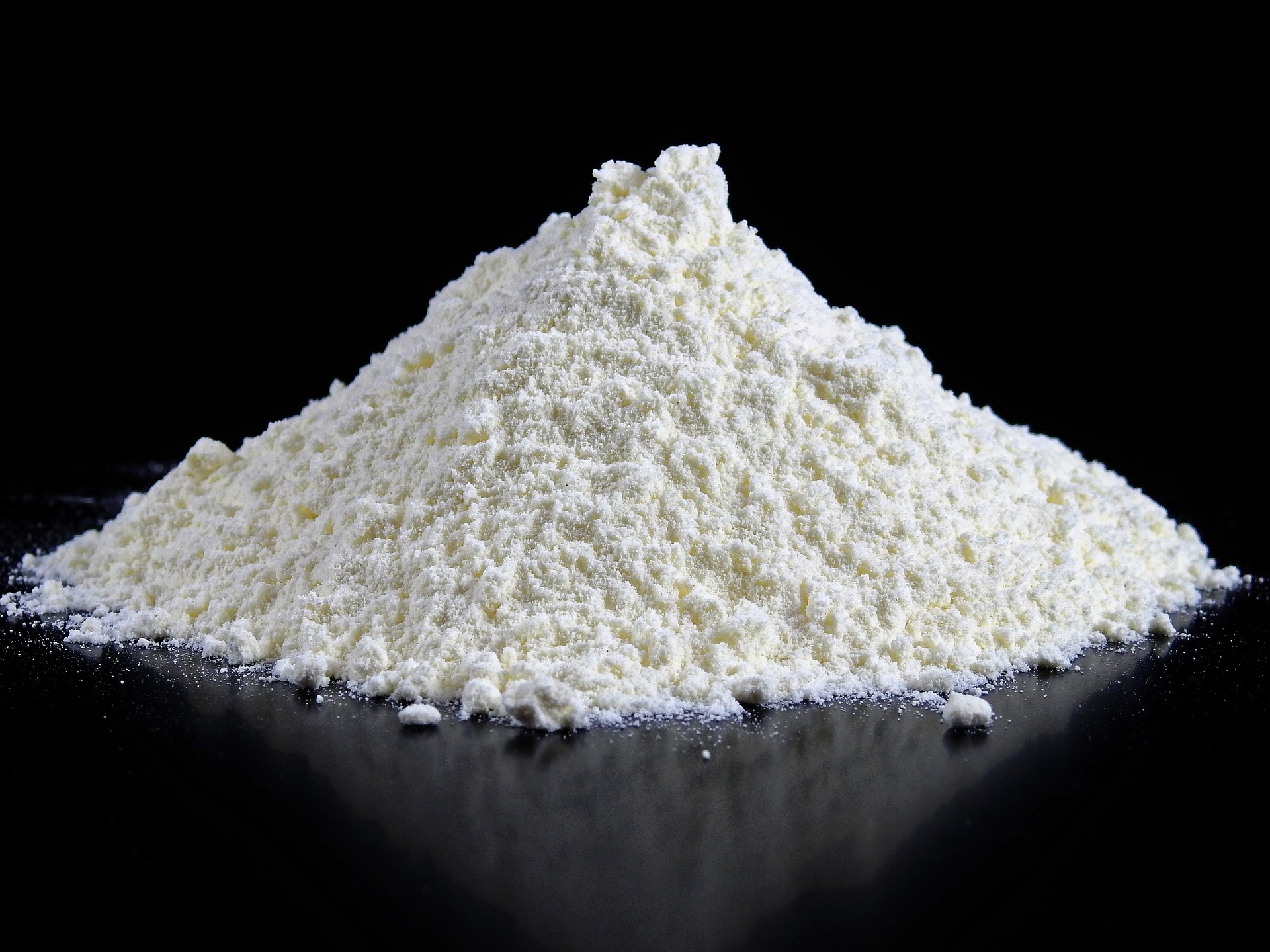This Difference Between is a really simple one.
After we go over the difference between all-purpose and self-rising flour, we’ll go through additional types of flours as well.
All-purpose flour is as the name suggests: it serves many purposes. It can be used for baking, coating, thickening, etc. This flour is made from a mixture of hard- and soft-wheat flours, and usually comes presifted.
All-purpose flour is available bleached or nonbleached. Bleached is chemically altered to be whiter, which some bakers prefer so cakes or breads will look a certain way. Unbleached is of course less processed.
Self-rising flour is all-purpose flour that has a leavening agent, usually baking powder, added to, along with salt. And that’s it.
Not surprisingly, then, it is quite simple to substitute all-purpose flour in for self-rising, but not so much the other way around.
We can’t simply omit baking power and salt from the recipe to sub self-rising in for all-purpose, which might be the first thought – this is because the amount of baking powder and salt in self-rising flour varies from brand to brand.
The other thing about self-rising is that you need to really measure it exactly.
To recap: All-purpose flour is as the name says – perfect for many different kinds of baking purposes. Self-rising is a more specific type of flour, and should only be used when a recipe specifically calls for it.
Here is a breakdown of common kinds of flours. The information was primarily derived from Better Homes and Gardens and The Food Substitutions Bible.
All-purpose flour: Made from both soft- and hard-wheat, usually sifted. Good for many purposes. Comes bleached for a whiter color, or unbleached.
Bread flour: Unbleached, hard-wheat flour. Has small amount of malted barley, and vitamin C or potassium bromate. Contains more gluten and more protein than all-purpose flour. Good for use in bread machines.
Cake flour: Made from soft-wheat, has a high starch content. Is often bleached. Is too delicate for most baking purposes, but is used for (obviously) cakes and certain baked goods.
Gluten flour: Made from removing the majority of starch from high-protein, hard-wheat flour. Often combined with low gluten, whole-grain flours to add gluten for the best texture.
Instant flour: A granular flour used for thickening gravies and sauces.
Pastry flour: Made from soft-wheat. Is similar to cake flour, but with slightly more gluten and protein, and slightly less starch. Good for biscuits, cookies, and pie crusts.
Self-rising flour: All-purpose flour with baking powder and salt added. Is not usually used in yeast products; is used for certain biscuits and breads.
There are other, less common flours as well, such as almond, whole-wheat, graham, rye, oat, etc. Oftentimes these specialty flours need to be combined with all-purpose because they’re low in gluten.
An additional note: Protein and gluten content are important with flours. Protein creates gluten when it is mixed or kneaded into the dough. The higher the gluten, the more chew in the baked good.
Clearly, all-purpose is the only one you likely need to have on hand at all times.
However, if you happen to currently have cake flour and bread flour on hand, give my awesome chocolate chip cookies a try.

I look always looking for ways to use my self rising flour to make homemade breads, pizza’s , but I want them to be soft and not hard.
I keep thinking back in the day they used what they had and that’s what I’m looking for.
I don’t want to invest in 3-4 types of flour.
Can you help me?
Honestly, I would stick with all purpose flour (which is named as such for a reason) and then turn it into self rising flour by adding baking powder and salt. That’s basically what self rising flour is. 1 cup flour + 1 tsp baking powder + 1/4 tsp salt. If you only want to have one type of flour on hand, I’d definitely make it all purpose.